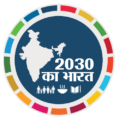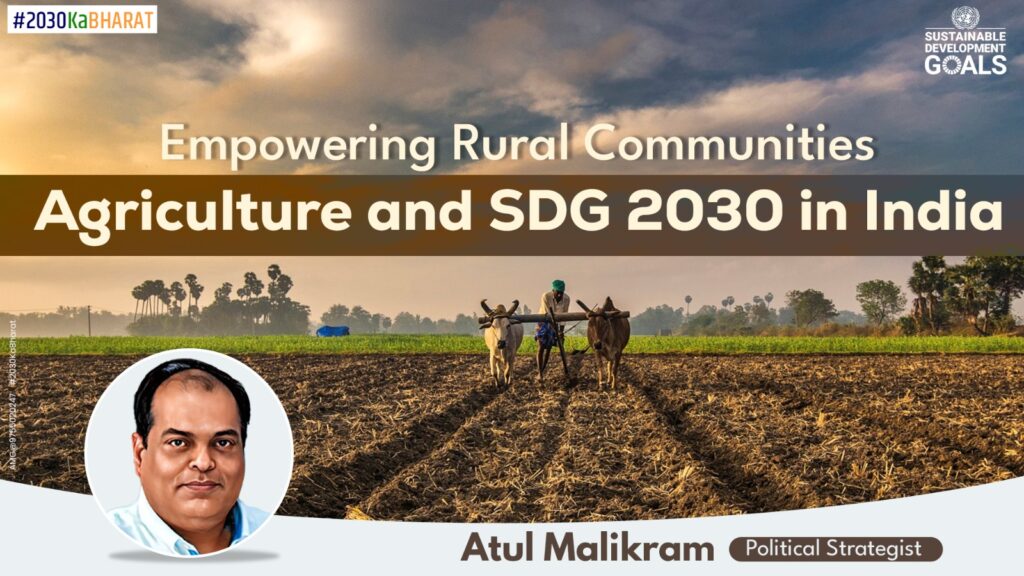In the pursuit of a more sustainable and equitable future, the United Nations has laid out a transformative roadmap: the Sustainable Development Goals (SDGs). These global objectives aim to address a wide range of challenges, from poverty and inequality to climate change and environmental degradation. With the year 2030 as the target date for achieving these goals, it is crucial for every nation to take significant strides in realizing the vision of a better world. In the Indian context, the Sustainable Development Goals are not just a set of ideals but a concrete plan of action. This article delves into the relationship between agriculture and SDG in India, exploring how they intersect and the progress being made toward these goals.
Understanding Sustainable Development Goals
Before we dive into the specific case of India, let’s first grasp what the Sustainable Development Goals are and why they are essential. The SDGs, also known as the Global Goals, are a universal call to action to end poverty, protect the planet, and ensure prosperity for all. They were adopted by all United Nations Member States in 2015 as a part of the 2030 Agenda for Sustainable Development. This agenda consists of 17 interconnected goals with 169 targets, covering a broad spectrum of economic, social, and environmental development.
Sustainable Development India Report: Progress and Challenges
In order to evaluate the progress and challenges related to SDG in India, it is imperative to consult the Sustainable Development India Report. This comprehensive document offers a clear snapshot of India’s advancement towards the SDGs and identifies the areas where more effort is needed. The report, issued by the NITI Aayog, the government’s policy think tank, provides a detailed assessment of India’s performance in areas such as poverty eradication, gender equality, clean energy, and responsible consumption.
Agriculture: The Backbone of Sustainable Development in India
Agriculture is the cornerstone of India’s economy, employing a significant portion of its population and contributing substantially to its GDP. Given this, the role of agriculture in achieving the SDGs cannot be understated. Let’s explore how agriculture and SDG 2030 are interlinked in India:
1. Zero Hunger (SDG 2)
SDG Goal: End hunger, achieve food security, improve nutrition, and promote sustainable agriculture.
India has made substantial progress in addressing hunger and malnutrition, thanks to various agricultural initiatives. The National Food Security Act, for instance, aims to provide subsidized food grains to millions of disadvantaged households. Moreover, sustainable agriculture practices, such as organic farming and the promotion of nutrient-rich crops, are helping to improve nutrition and food security.
2. Clean Water and Sanitation (SDG 6)
SDG Goal: Ensure availability and sustainable management of water and sanitation for all.
Agriculture is a major consumer of water resources. Therefore, sustainable water management practices in agriculture are essential to ensure clean water availability. Initiatives like rainwater harvesting and efficient irrigation methods are helping India make strides towards this goal.
3. Decent Work and Economic Growth (SDG 8)
SDG Goal: Promote sustained, inclusive, and sustainable economic growth, full and productive employment, and decent work for all.
Agriculture provides employment to a significant portion of India’s workforce. Promoting sustainable agricultural practices not only boosts income for farmers but also creates job opportunities in related sectors. This contributes to economic growth and supports SDG 8.
4. Responsible Consumption and Production (SDG 12)
SDG Goal: Ensure sustainable consumption and production patterns.
Agriculture plays a pivotal role in shaping consumption and production patterns. Sustainable farming practices, reduction of post-harvest losses, and the promotion of organic products align with SDG 12 by reducing waste and fostering responsible consumption.
2030KaBharat: India’s Commitment to SDG 2030
To reinforce the commitment to achieving the Sustainable Development Goals by 2030, India has launched the “2030KaBharat” initiative. This ambitious endeavor seeks to integrate the principles of sustainable development into every aspect of the country’s growth and development.
Challenges and Opportunities
While India has made significant progress in aligning agriculture with the SDGs, there are still challenges to overcome. Climate change, water scarcity, and land degradation pose threats to sustainable agriculture. However, these challenges also present opportunities for innovation and adaptation. By harnessing technology, promoting climate-smart agriculture, and enhancing resource management, India can address these issues effectively.
Agriculture and SDG in India are intertwined in a complex web of challenges and opportunities. As India continues its journey toward achieving the Sustainable Development Goals, it is evident that agriculture plays a central role. The progress made so far is commendable, but there is still work to be done. Through sustainable farming practices, responsible resource management, and the collective commitment of the nation, India can truly reinforce its dedication to a more sustainable and equitable future.
In summary, India’s pursuit of the Sustainable Development Goals is not just a global obligation but a national imperative. The integration of agriculture and SDG in India is a powerful example of how a nation can align its economic progress with social and environmental sustainability. Through careful planning, dedicated efforts, and a commitment to innovation, India can indeed pave the way for a better and more sustainable future.

